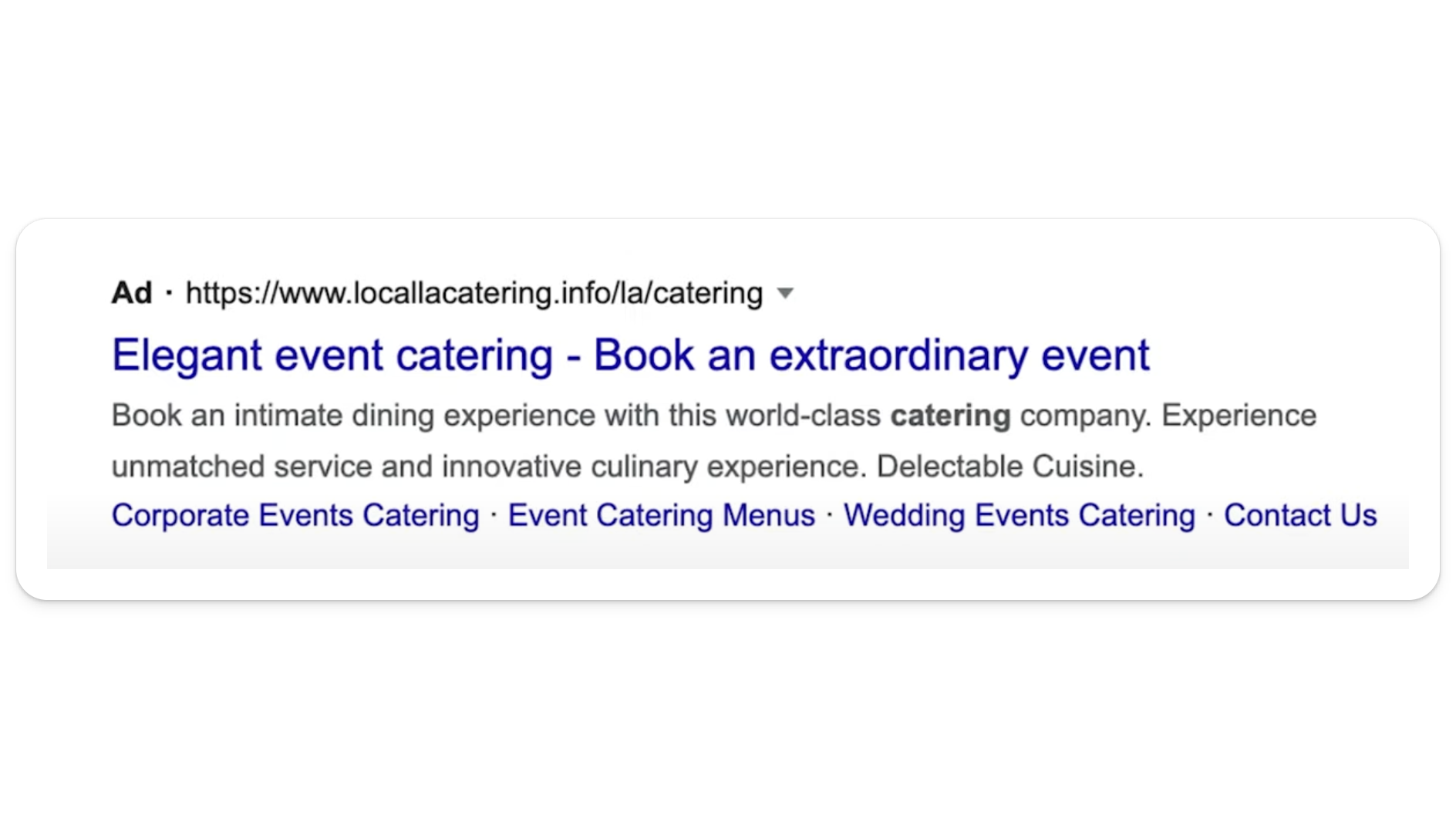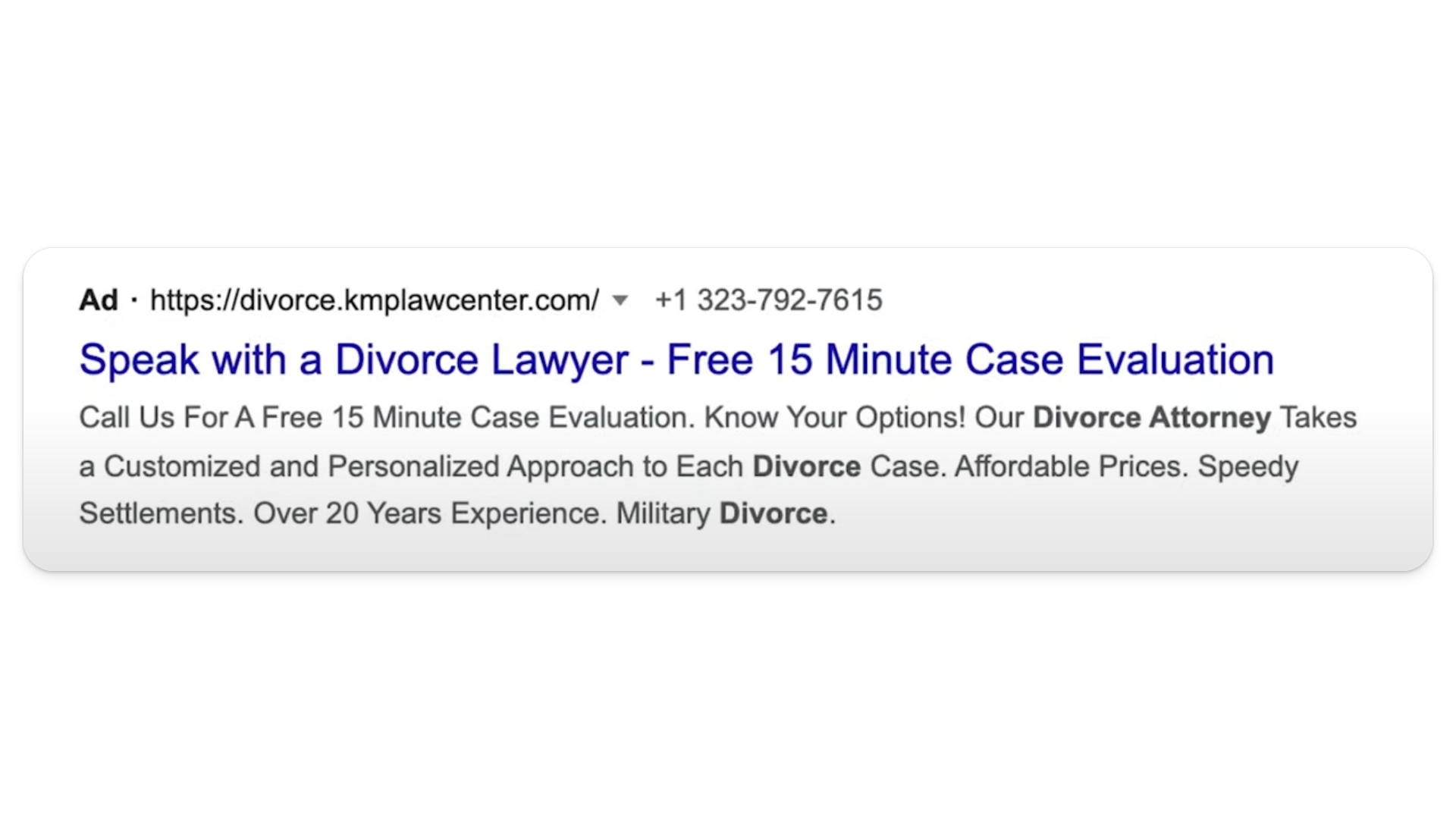When it comes to Google Ads optimization, there’s a common misconception that achieving better results simply requires increasing your budget. In reality, it’s not always about spending more — it’s about spending smarter. One of the most overlooked truths in digital advertising today is that better ads can actually cost less per click, drive more traffic, and ultimately result in more profitable campaigns.
In this post, we’ll delve into why crafting effective, relevant ads is the foundation for success in Google Ads and how you can optimize your ads for better performance and lower costs. We’ll also share the five biggest tips on how you can improve your click-through rate (CTR), boost your quality score, and enhance your overall performance in Google Ads.
Prefer video? Check out our video on How to Write Irresistible High CTR Search Ads that Convert on YouTube:
Still with us? Good. Let’s dive in.
Why Better Google Ads Matter
The most important question in Google Ads is this: Do your ads get people to click on them?

If the answer is no, you’re going to face several challenges in making your Google Ads campaign profitable. On the other hand, if the answer is yes, you’re already on the right track toward aligning the rest of your strategy and driving profitable results.
But before we dive into the how-tos of creating better ads in Google, let’s talk about why it matters so much. This is the most fundamental reason why it’s a good idea to have fully optimized ads in your Google Ads account:
Increased Relevance Leads to a High Click-Through Rate (CTR)
When your ads are more relevant to the searches they appear for, potential customers are more likely to click on them. Google measures the relevance of your ad based on how often users click on it in comparison to how many times it’s shown. This is known as a click-through rate (CTR).
Why is having a higher CTR important? Because Google rewards ads with higher click-through rates (CTRs) by improving their positioning and often reducing the cost per click (CPC). More clicks at a lower cost per click (CPC) mean you’re paying less while driving more traffic. Given this, having a good click-through rate (CTR) makes your ads significantly more competitive than those with low click-through rates (CTRs).

Increased Relevance Leads to Better Quality Scores
Quality Score is one of Google’s key performance metrics, though it can often feel nebulous. Ultimately, the Quality Score measures how relevant your ad, offer, and landing page are for someone reviewing the search engine results page. Ads with a higher Quality Score not only rank higher, but also cost less per click, helping you drive more profitable traffic from your campaigns.
Improving your Quality Score demands a holistic approach. Your ad and landing page must align with the searcher’s intent. When these elements harmonize, you’ll see improvements in your click-through rate (CTR), cost per click (CPC), and Quality Score. This alignment ultimately makes your Google Ads campaigns more profitable.
What’s the Purpose of a Search Ad?
Now that we understand why better ads lead to better campaign performance, it’s essential to define the core purpose of your search ads. A search ad has three primary functions:
Grab the attention of the user searching for a specific term.
Entice the user to click on your ad (instead of your competitor’s).
Prime the user to convert on your landing page by matching their intent.
In addition, it’s critical that the search terms your ad is showing for are relevant to your audience (and your offer).
Let’s break this down further:
1. Grab Attention

Search users are typically looking for specific solutions, whether it’s a service, product, or information. Your ad must speak to what the searcher is looking for immediately. A well-crafted headline that matches their search query is the first step toward grabbing (and keeping) their attention, and will lead to an above average CTR.
2. Get the Click
Grabbing attention is half the battle, but it’s not enough to generate results. Your ad copy must be compelling enough to make potential customers click. A strong value proposition or offer is crucial here, as it differentiates you from the competition. Ads with a good CTR usually have compelling ad copy that matches potential customers’ searches, while ads with a low conversion rate don’t.
3. Prime for Conversion
Once someone clicks your ad, they should be directed to a landing page that closely matches the promise made in the ad. If your ad says “Affordable SEO Services in Austin,” but the landing page doesn’t speak to SEO services or Austin, you’ll lose credibility (and conversion volume). All landing pages should be as relevant as possible to ensure you’re not wasting any conversion opportunities.
Five Tips to Write Better Google Ads
Now that we know why better ads can lead to more profitable campaigns, it’s time to explore actionable strategies.
Here are the five biggest tips we use here at Grow My Ads to help you write super high click-through rate Google Ads that stand out, get clicked, and convert:
Match Your Ads to What People Are Searching For
In digital marketing, the most critical factor in getting users to click on your ad is relevance. The searcher needs to immediately recognize that your ad is aligned with their query. For example, if someone is searching for “Window Repair,” and there are two ads, the one with an ad headline like “Affordable Window Repair Near You” is far more likely to capture their attention than a generic “Home Improvement Services” headline.

Therefore, it’s best practice to use the keyword in your headline. Matching your ad’s headline to the keywords your ad is showing for will increase the likelihood of a click, as the searcher is more likely to trust that your ad will provide the solution to their problem.
If you have multiple different search queries that are showing inside of your ad group because you’ve got multiple keywords in it, that’s fine so long as your ad headline matches the majority of those terms or keywords. That said, ideally your ad would have exactly the same phrasing inside of your ad headline.

Craft a Compelling Unique Selling Proposition (USP)
Even if your ad matches the search query, it still needs to stand out from the competition. To do this, you need to have a clear and compelling unique selling proposition (USP). Why should someone choose your business over the others appearing in the same search results?

For instance, if you run a catering business, your USP could be “Elegant Event Catering – Book an Extraordinary Event.” Adding words like “elegant” and “extraordinary” differentiates your service from others that simply list “Catering Services” without offering any special appeal.
Have a Clear Call-to-Action (CTA)
Once you’ve captured someone’s attention with a relevant ad targeting the right keywords and a strong USP, you need to make it easy for them to take the next step. This means presenting them with a specific offer and a clear call-to-action (CTA). A well-defined CTA, such as “Get a Free Consultation” or “Book Your Appointment Today,” helps users understand the action you want them to take.
Ensure your CTA is simple and low-commitment — something the user can do without too much thought. Offering something free, like a consultation or case evaluation, often makes users feel more comfortable clicking through.

Keep Your Ad Testing Simple and Deliberate
One common mistake many advertisers make is testing too many variations at once without a clear strategy. If you’re running multiple ads in a single ad group, it’s crucial that the differences between the ads are significant enough to constitute a meaningful test.
For example, if you have seven ads in an ad group, and all of them have similar headlines and offers, it will be difficult to determine which element is driving performance.

Instead, limit yourself to two or three ads with distinct variations. This allows you to make clearer decisions about which copy performs best, and adjust your campaigns accordingly. The goal here is to iteratively increase the performance of your ad groups, by testing and optimizing based on that performance.
For example, some of the ads in the image below have a much better click-through rate (CTR). Others have a lower cost per conversion. Unfortunately, this company has left all of their ads running — letting Google continue to allocate their ad spend to ads which don’t perform as well.

Responsive Search Ads: Test Themes and Angles, Not Just Copy
Google’s responsive search ads (RSAs) allow you to enter multiple headlines and descriptions, so that Google can automatically test different combinations to find the highest-performing versions. While you have less control over how your ads will appear to users, RSAs can be a powerful tool to help you find the most effective messaging.
When testing RSAs for your business, focus on themes rather than specific headlines. For example, test ads focused on “Corporate Rentals” versus ads focused on “Luxury Homes.”

This approach allows you to understand which theme resonates more with your audience, giving you valuable insights for future ad copy development.
Bonus Tip: Use ChatGPT to Write and Test New Headlines
As AI becomes a larger part of the Google Ads ecosystem, advertisers are also starting to use tools like ChatGPT to help create ads, by brainstorming new ad copy ideas and headlines. While AI can help streamline the process of generating new ad variations, it’s essential to provide clear, specific prompts to get the best results.
Avoiding Common Pitfalls: Don’t Try to Change User Intent
One thing your ads cannot do is change the intent of the person searching. No matter how well-crafted your ad copy is, it won’t convert if it’s shown to the wrong audience. This is why it’s essential to make sure your ads are targeting the right keywords and reaching users who are searching for the solutions you offer.

If you’re serving ads to irrelevant traffic, even the best ad copy won’t be enough to save your campaign. This is why continuously optimizing your keyword targeting and ensuring your ad appears in front of the right audience is just as important as refining your ad copy. Bottom line: highly targeted ads perform better.
Final Thoughts
Creating better Google Ads isn’t just a matter of crafting clever copy or avoiding the wrong keywords — it’s about the holistic alignment of relevance, compelling messaging, and effective testing. When you get this right, you’ll enjoy a lower cost per click, a higher click-through rate, and more profitable campaigns.
Start by refining your ad copy, ensuring it matches the intent of your target audience, and optimizing your landing pages to deliver on the promises made in your ads. Combine this with deliberate testing, smart use of Google’s automation tools, regular reviews of your Quality Score, and a strong focus on relevance, and you’ll be on the path to significantly better Google Ads performance.
Remember, the goal is simple: better ads lead to more clicks, lower costs, and higher profitability. If you’re looking to elevate your Google Ads strategy, these five tips are your roadmap to success.



